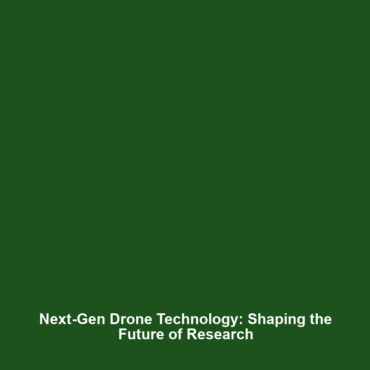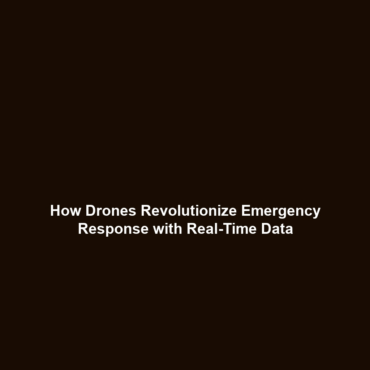Next-Generation Drone Technology: The Future of Drones in Research
The evolution of drone technology is not merely a technological leap; it represents a paradigm shift in research methodologies. As drones transition into next-generation designs, their capabilities are rapidly redefining the drones in science landscape. With enhancements in data collection, environmental monitoring, and computational efficiency, these advanced aerial vehicles are proving indispensable for researchers across various scientific disciplines.
Key Concepts of Next-Generation Drone Technology
Understanding next-generation drone technology involves exploring several key concepts crucial for its application in scientific research:
- Autonomous Flight Systems: Modern drones feature advanced autonomy, allowing them to navigate complex environments without human control.
- Sensor Integration: The ability to integrate powerful sensors enables drones to collect vast amounts of data, from high-resolution imagery to environmental metrics.
- Data Analytics: Enhanced data processing capabilities allow for real-time analysis and decision-making, providing immediate insights during research missions.
These concepts foster a deeper understanding of how next-generation drone technology is revolutionizing scientific inquiry within the larger context of drones in science.
Applications and Real-World Uses
The applications of next-generation drone technology in research are diverse and impactful:
- Environmental Monitoring: Drones are used to monitor environmental changes, track wildlife, and assess natural disasters, showcasing how next-generation technology is transforming ecological studies.
- Agricultural Research: Precision agriculture is enhanced through the use of drones to survey crop health, soil conditions, and irrigation needs, demonstrating practical uses of drone technology in science.
- Public Health Surveillance: Drones facilitate timely data collection in epidemic zones, providing valuable insights into public health dynamics.
These applications exemplify how next-generation drone technology is used effectively within the realm of drones in science.
Current Challenges of Next-Generation Drone Technology
Despite the advancements, several challenges remain pertinent in the application of next-generation drone technology:
- Regulatory Restrictions: Navigating complex aviation regulations can hinder operational flexibility.
- Data Privacy Concerns: The collection of extensive data raises ethical questions regarding privacy and consent.
- Technological Limitations: Battery life and payload capabilities continue to challenge operational efficiency.
Understanding these issues is vital to addressing the challenges of next-generation drone technology within the field of drones in science.
Future Research and Innovations
The landscape of drone technology is evolving with continuous innovations that promise to reshape its future:
- Swarm Technology: Emerging research into swarm drones could enhance collaborative tasks and data collection in large scale scientific endeavors.
- AI and Machine Learning: Integrating AI with drones will likely improve data analysis, predictive modeling, and operational decision-making.
- Battery Technology Advancements: Research into more efficient power sources could significantly extend flight times and increase payload capacities.
These innovations reflect a commitment to advancing next-generation drone technology, ensuring a promising future within the domain of drones in science.
Conclusion
Next-generation drone technology heralds an exciting chapter in scientific research, enabling unprecedented data collection and analysis capabilities. As we navigate its applications, challenges, and future innovations, the importance of this technology within the context of drones in science becomes ever more apparent. Researchers and stakeholders should embrace these advancements and explore their potential further.
For further reading on related topics, visit our sections on Satellite Imaging and Drones in Agriculture.

